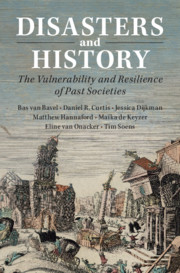In this article we analyse the root causes of the high level of resilience of one particular peasant society: the Campine area. While peasant societies have often been deemed one of the most vulnerable societies in the face of crises and disasters, because of their lack of capital, technology and power, we show that peasant communities possessed some important weapons of the weak. Thanks to strong property rights, collective action, a diverse economic portfolio and inclusive poor relief institutions the Campine peasants were able to weather both the late medieval crises, harvest failures as well as the threat of sand drifts between the fourteenth and nineteenth century.
